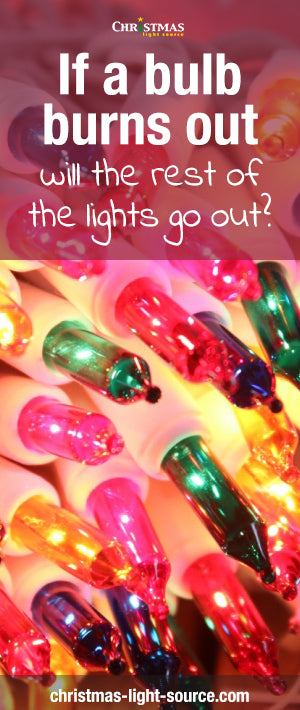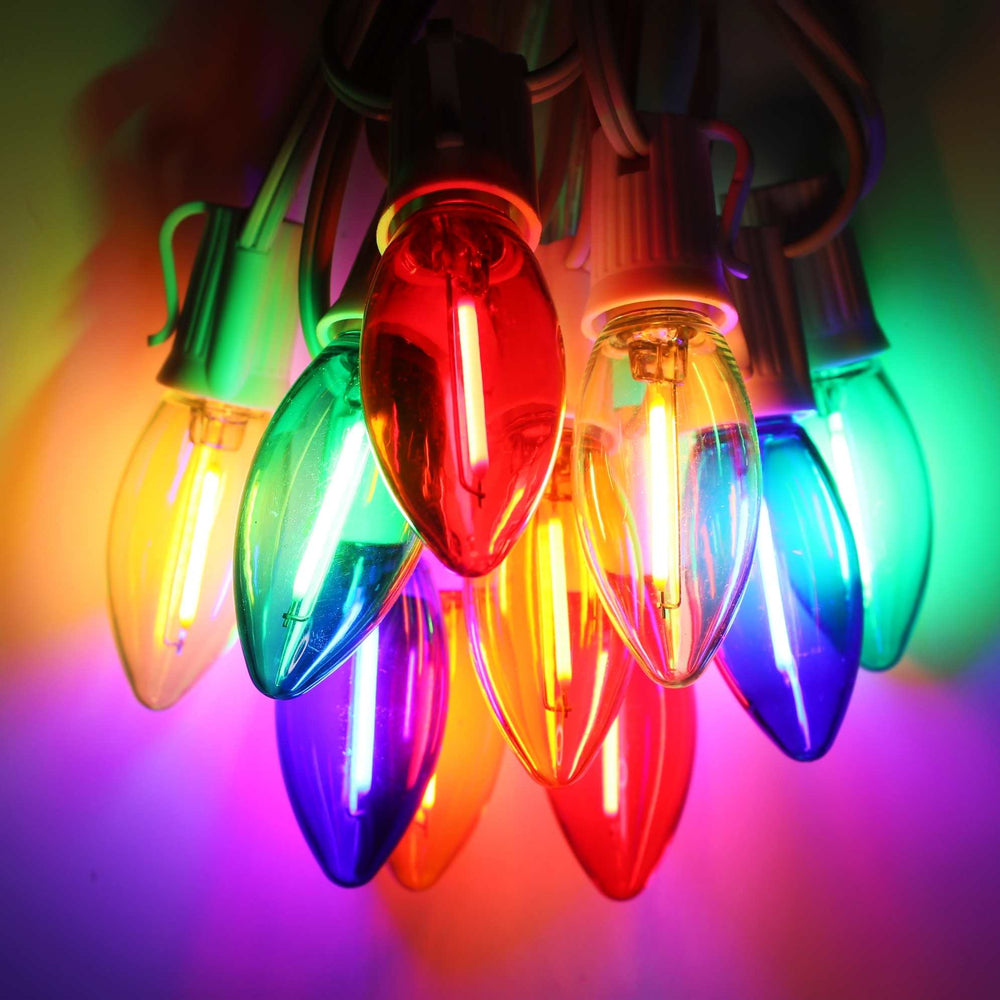

We hear this question and variants of it all year.
Is the reason one bad bulb can take out an entire series of lights is that it breaks the circuit? Is that true of all light strands?
Short answer:
No, if a bulb burns out, the rest of the lights should stay lit. Replace the burned out bulb as soon as possible to extend the lifespan of the remaining bulbs. If the light string has gone out, it means a bulb is halfway or fully out of it's socket and has broken the circuit. Find the offender, and reinstall or replace it to fix your Christmas lights.
(Note: This article pertains only to traditional incandescent mini light strings. LED strings are a totally different animal.)
Long Answer
When Christmas mini light strings lights were first manufactured, a string of lights would go out if one bulb burned out because breaking the filament in a single bulb would break the connection. (And by burned out we mean when the filament broke.)
Fortunately, that’s not the case with most modern mini light strings.
In the early 70’s, manufacturers introduced a shunt wire at the base of each bulb. If you grab a magnifying glass and look really hard you might be able to see this little wire at the bottom of your bulbs. This engineering improvement means that if the bulb burns out (and the filament is broken) then the rest of the light strand will stay lit.
Keep in mind, that if a mini light bulb is half or fully removed from its socket or if the socket has been damaged then the other bulbs in that circuit will go out because they are wired in series.
Mini lights are constructed with one or more circuits. Depending on the number of circuits in your string of lights, only the circuit that contains the removed bulb will go dark.
For example, if your light string has 50 bulbs and they are all on one circuit they will all go out if a bulb is removed from its socket. If your set of 100 lights is constructed in 2 50-light circuits then half the total set will have an issue. This helps to localize the issue for troubleshooting.
Most of the time when only part of a string of mini lights goes out it’s an issue of either a failure of a shunt wire or a bulb is partially or completely unseated.
You can repair your set by replacing the missing bulb or by using a basic tester to diagnose your strand. A widely available tester is the Light Keeper Pro. You can see more info on this product with handy how-to videos at the manufacturer website: https://lightkeeperpro.com
We sell light keeper pros - you can see our price by clicking here.
Don't have a light keeper pro? Here are a few tips to help with troubleshooting:
- Untangle the light string with as much patience as can be mustered. Try not tugging or cursing if there are children present. (Consider rolling and bagging the lights next year in their own baggies to keep them separate and untangled.)
- Initially inspect the light strings looking for frayed wires and broken bulbs. If the wires are frayed, discard the lights and start an examination of the next string of lights in the pile. Broken bulb? Replace it with a replacement bulb that was shipped with your set or a bulb pulled from a light string whose wiring has failed. Note that if you use one string to provide replacements for another, they must be identical as bulbs from different styles/configurations of strings will/may have different voltage specifications.
- Engire string doesn't come on? Check the fuses. Doesn't fix things? Visually examine the light string for unseated and missing bulbs. Genty reinstall the half seated bulbs and replace missing bulbs. Don't remove and reinsert the bulbs as this will ruin your day and will more than likely make problems worse. String still not fixed? Move on to the next string of lights.
- Repeat until all light strings have been checked. This process is best done in front of a roaring fire and not while standing in the front yard in the snow or rain.
Here's is a video that also discusses this topic:
Previous version released November 24, 2014



